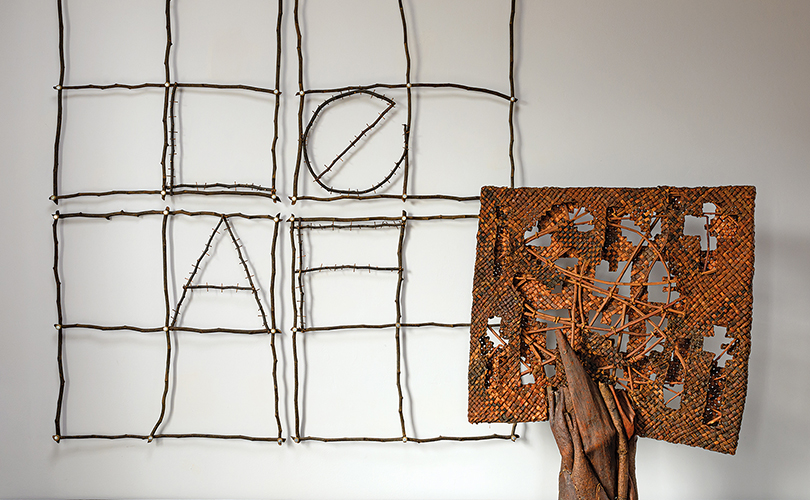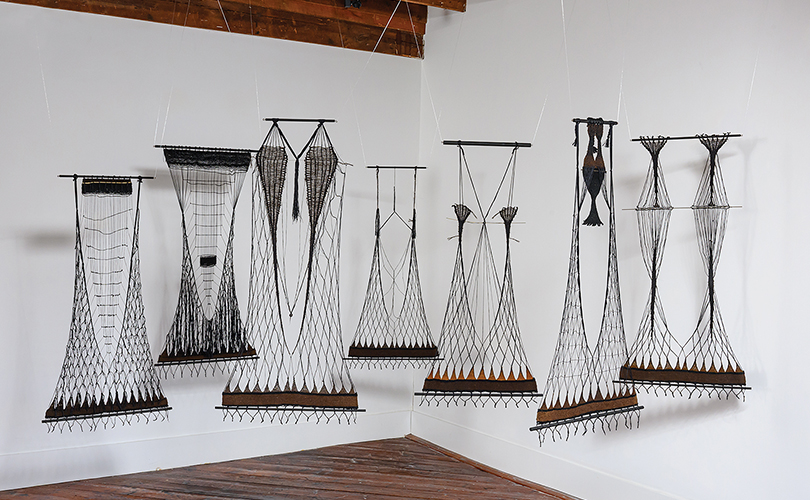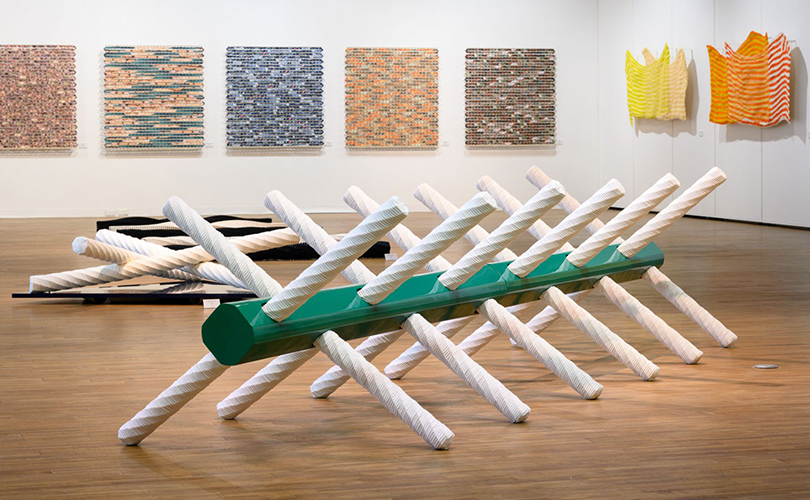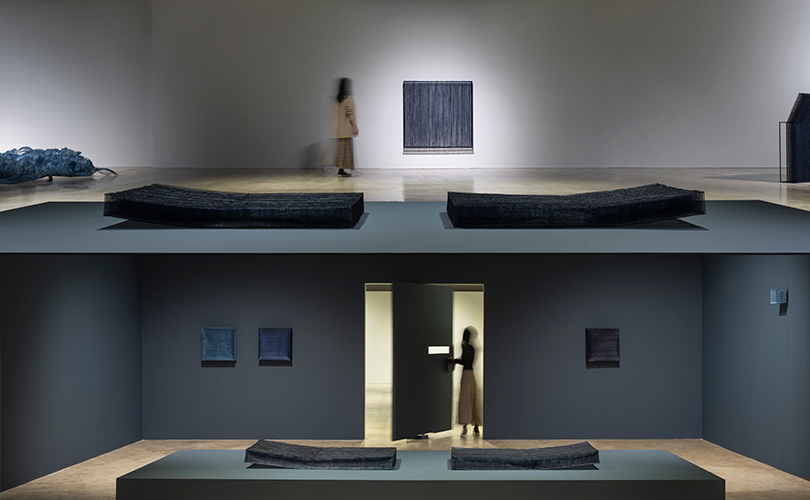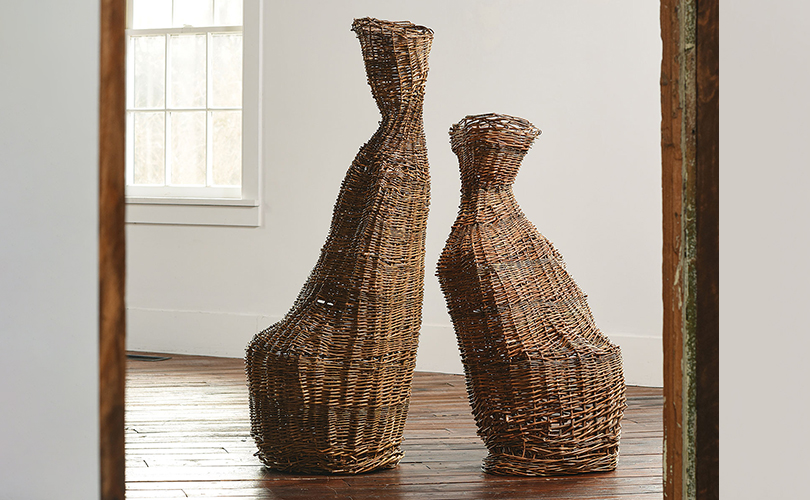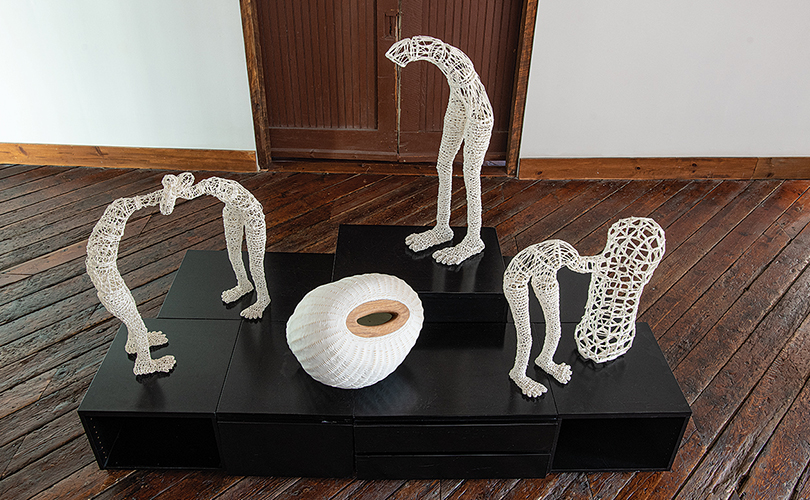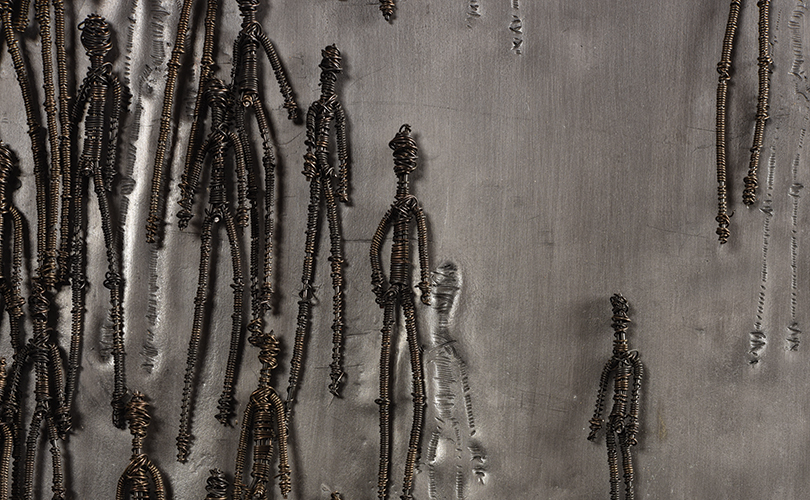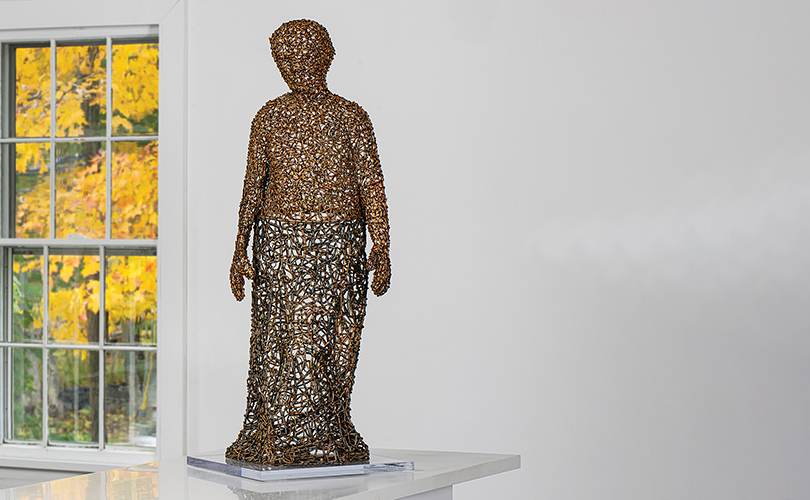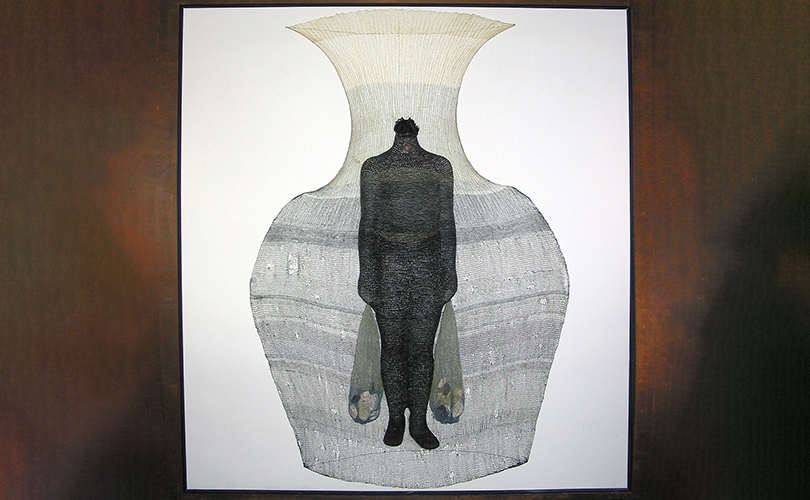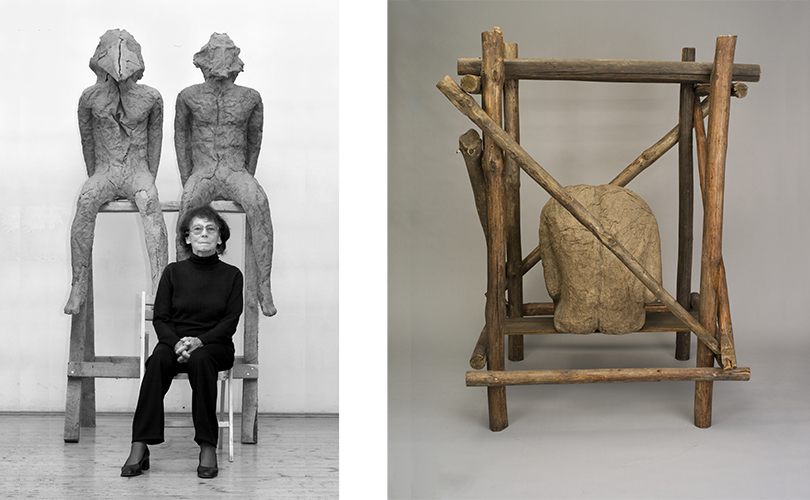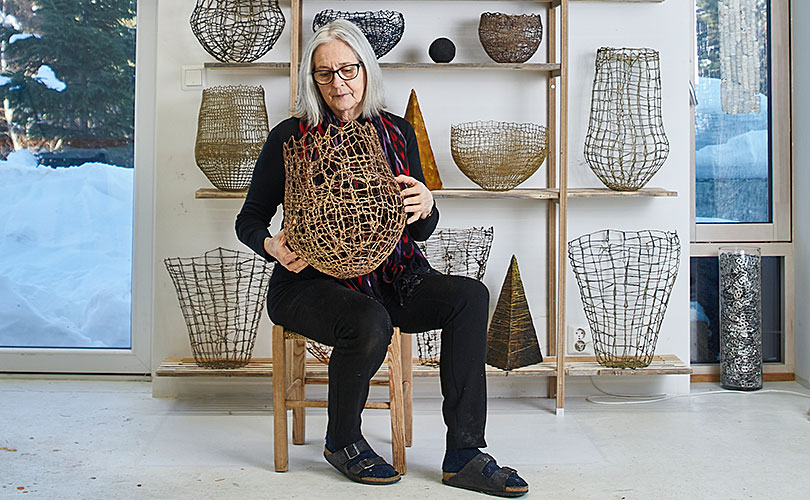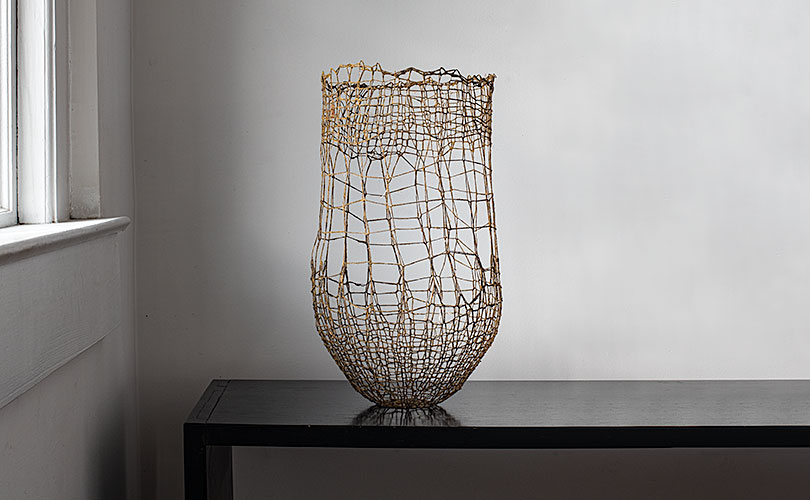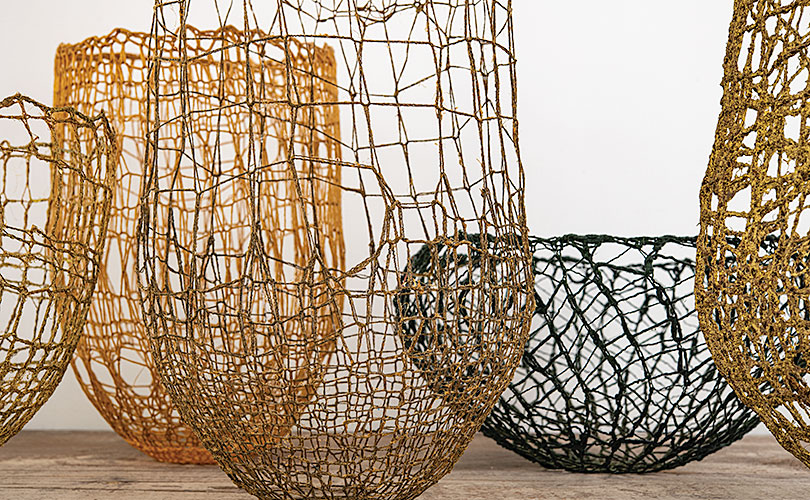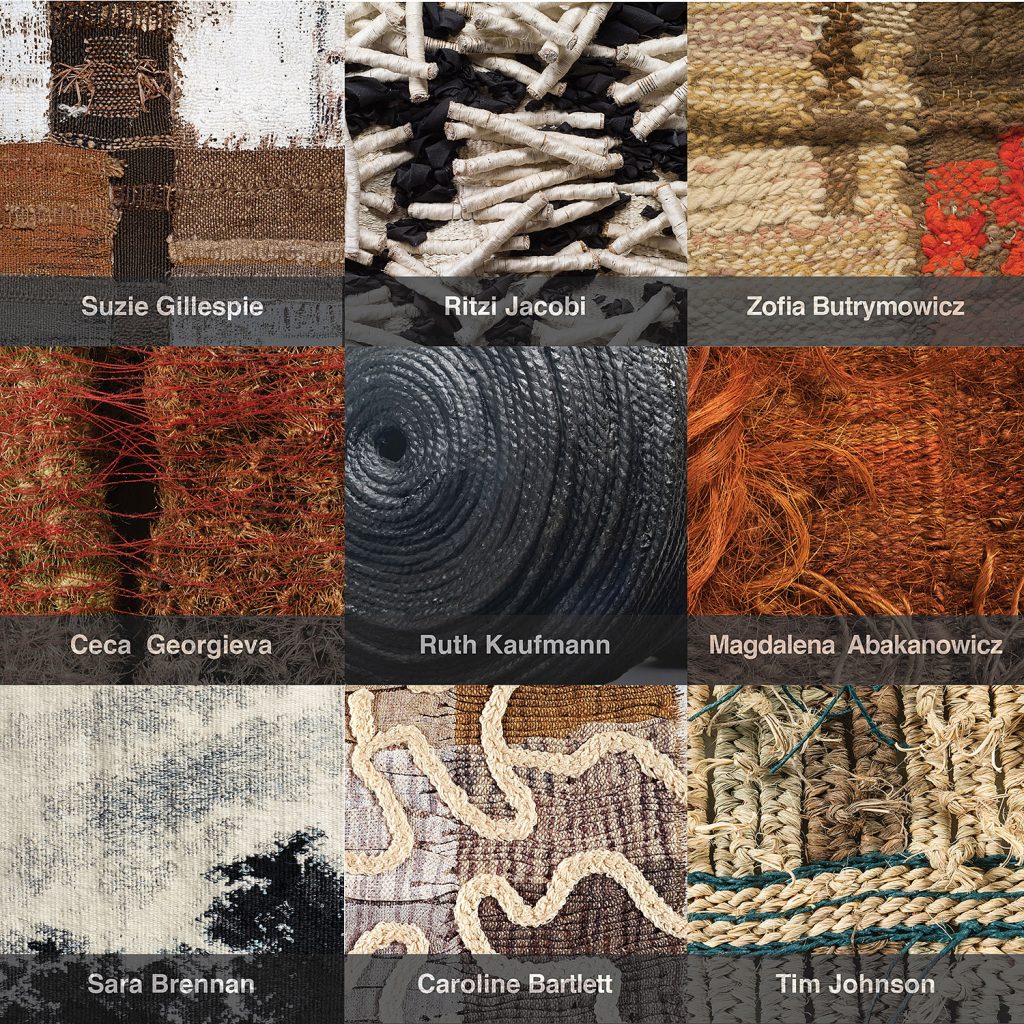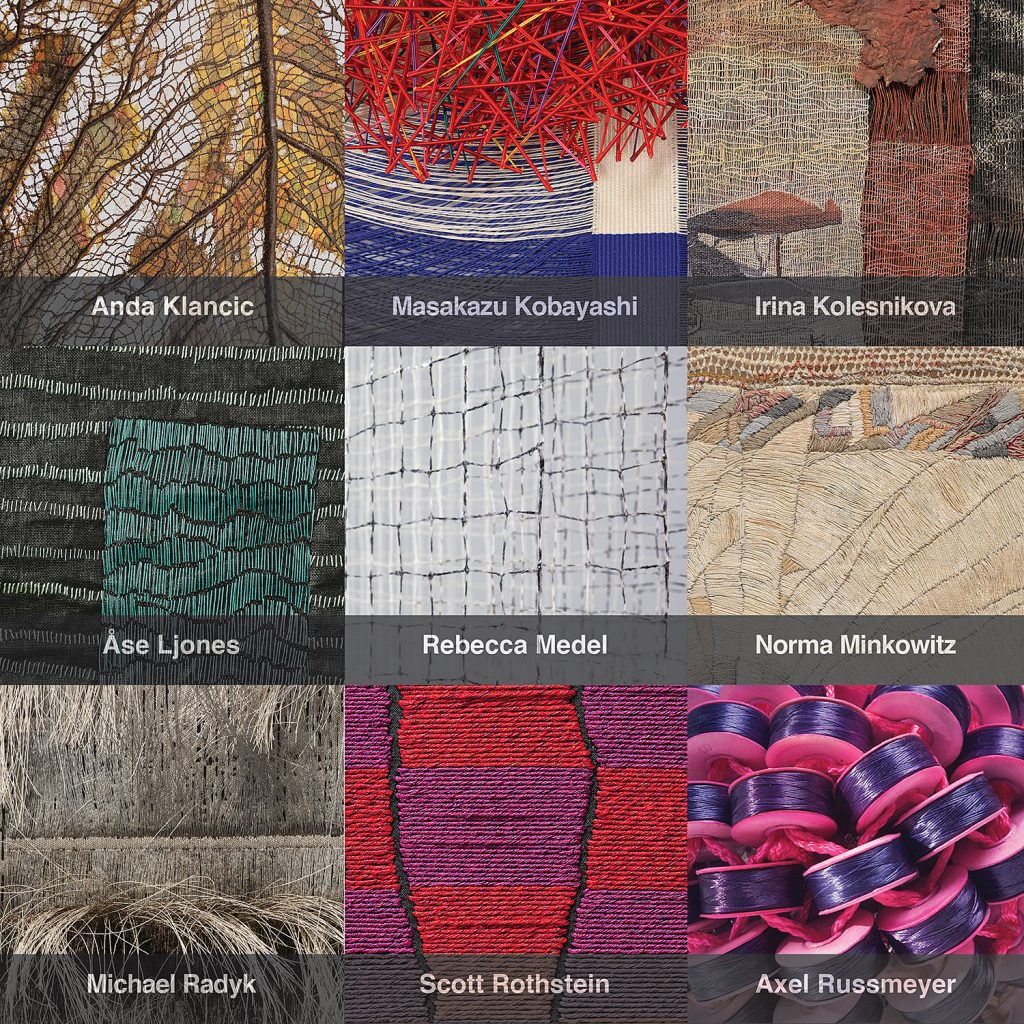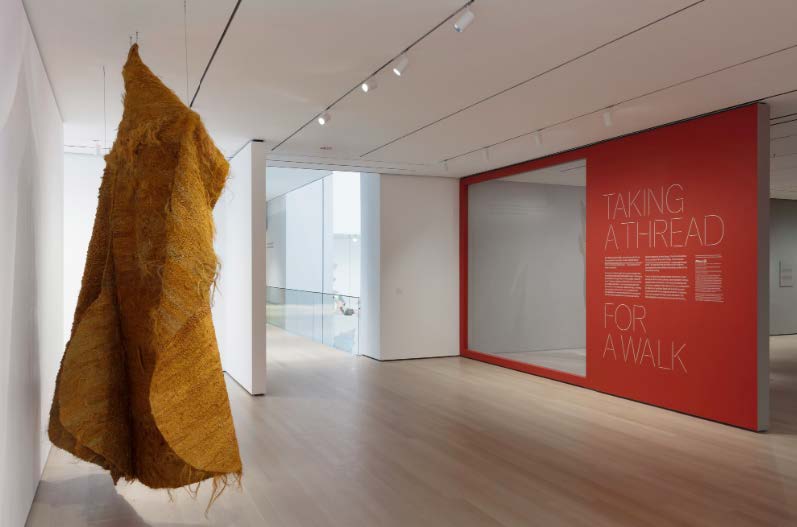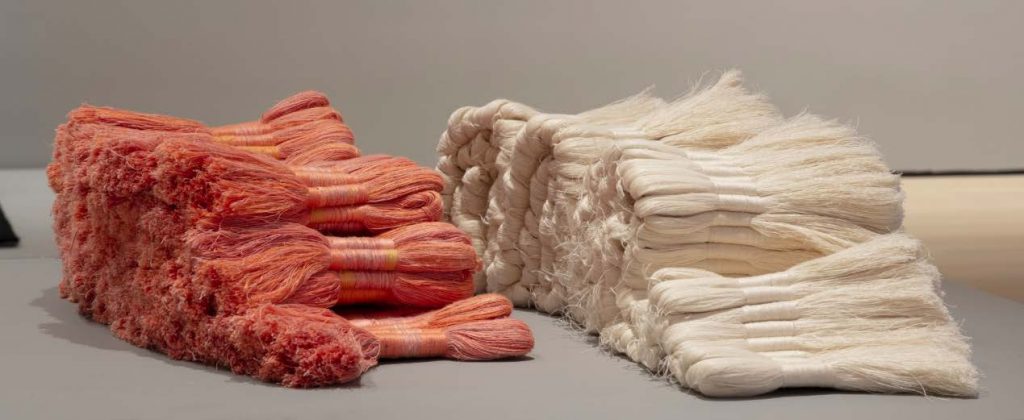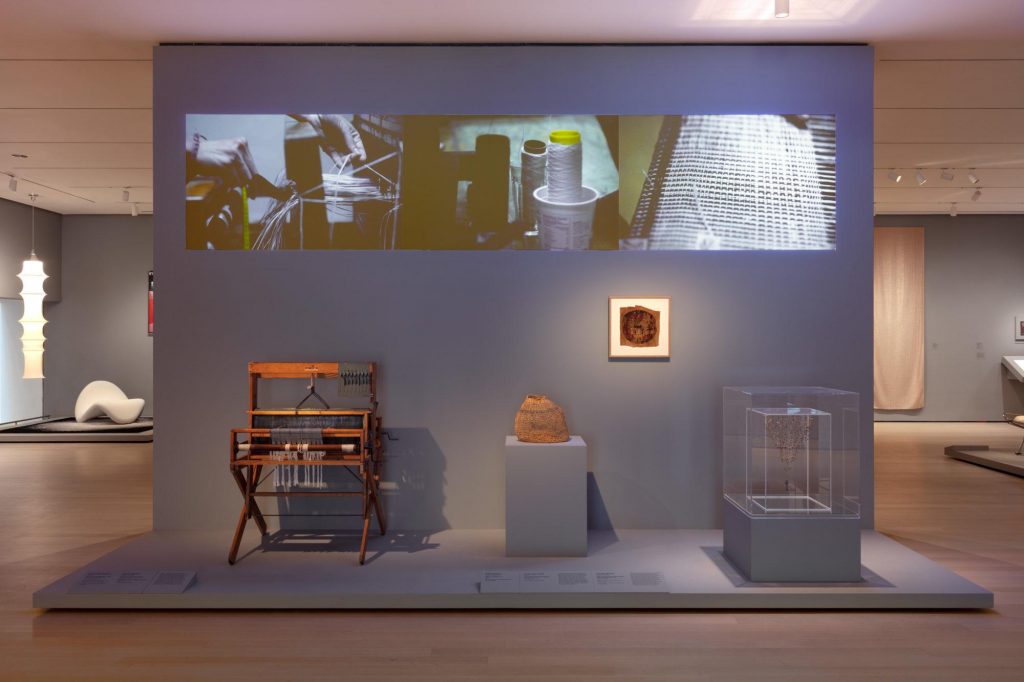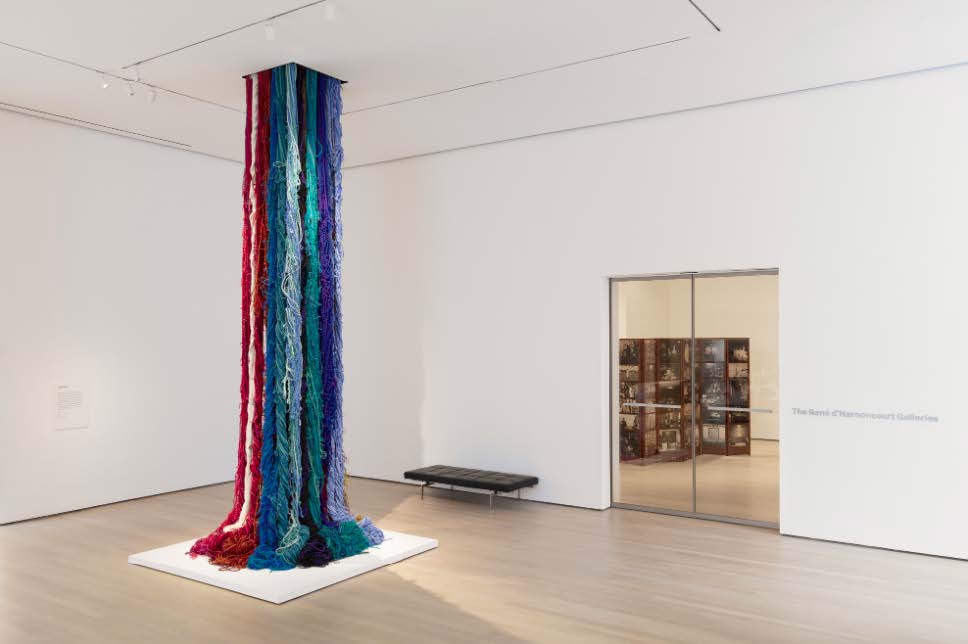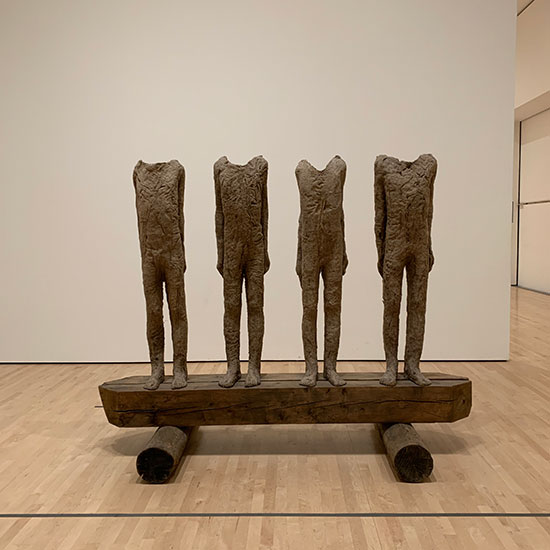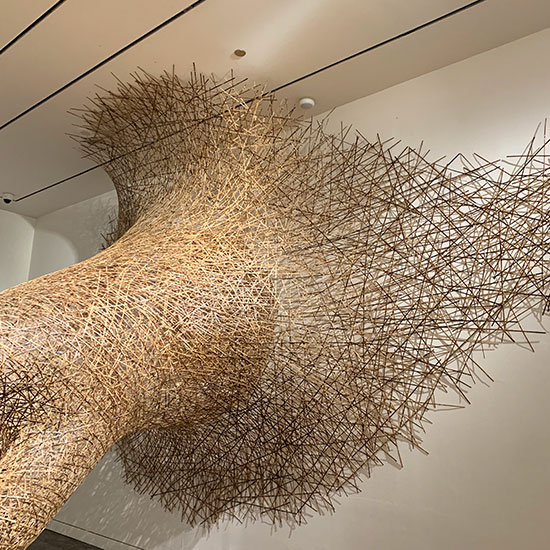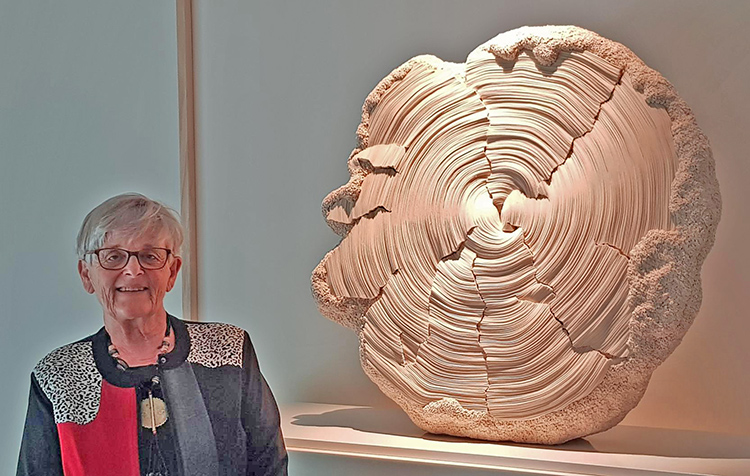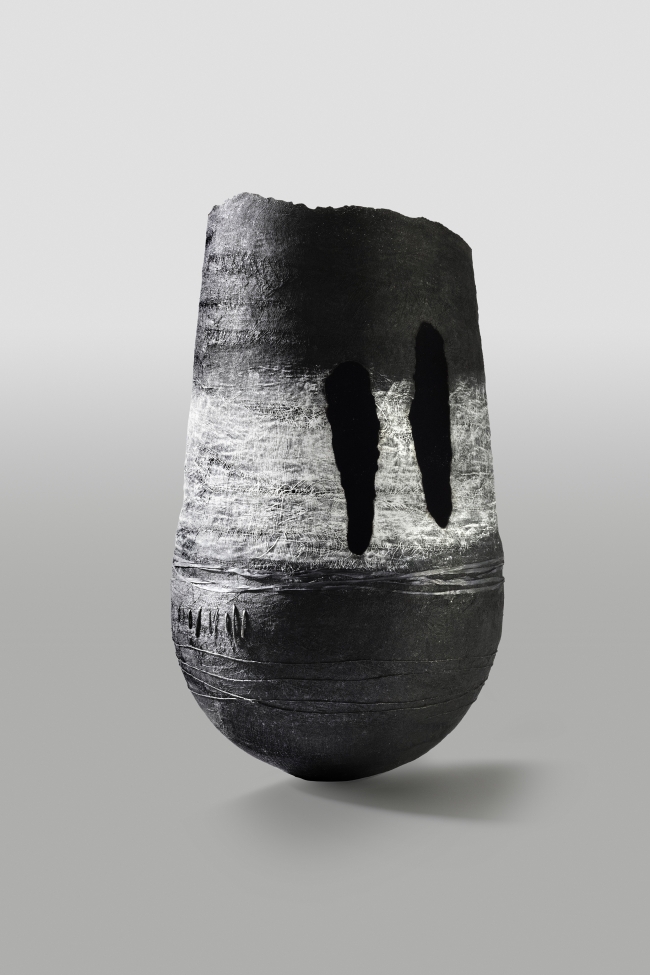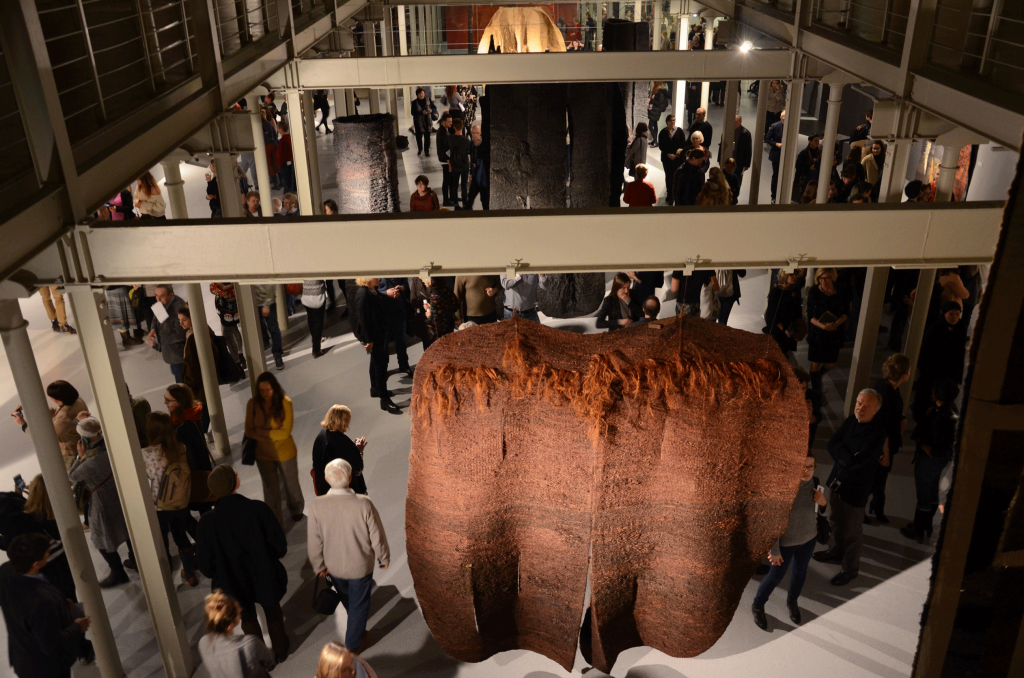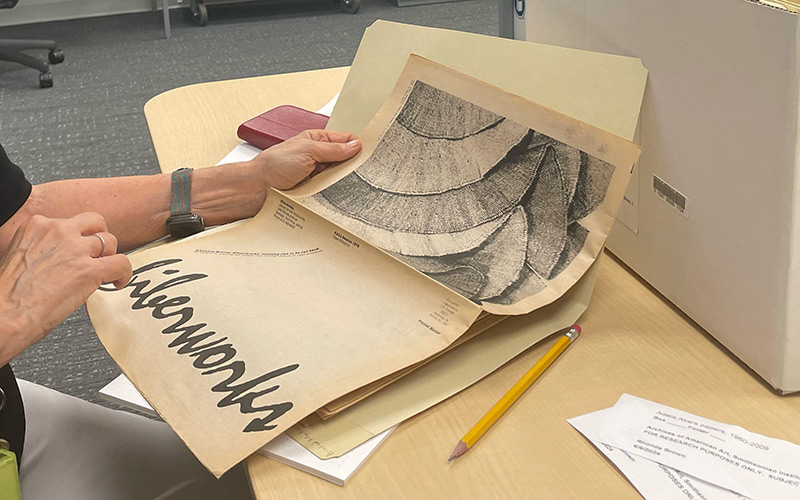
Five decades ago, Fiberworks in Berkeley, California, was a vibrant cultural hub that played a significant role in the burgeoning arts scene of the early 1970s. Situated in the heart of one of the nation’s most politically and artistically dynamic cities, Fiberworks became a space where fiber art, design, and social change intersected.
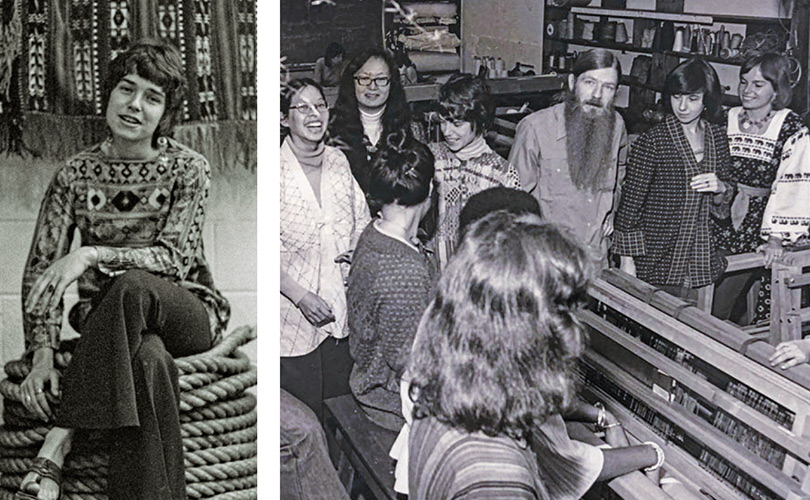
Founded in 1973 by Hungarian-born environmental sculptor, Gyöngy Laky, who served as its Director through 1977, Fiberworks was an internationally recognized art center, instrumental in redefining textile arts through the late 80s. The Fiberworks Gallery showcased textile art at a time when commercial galleries and museums gave it scant exposure. In 1975, the name was changed to Fiberworks Center for the Textile Arts, reflecting the increasing range of activities that included lectures, special events, international bazaars, and services for artists, together with a sweeping array of classes. The dynamism of creativity in Berkeley prompted internationally known textile designer Jack Lenor Larsen to refer to the Bay Area as “The Vatican” of this new movement in the arts.
Mija Riedel, who has researched Fiberworks’ history, notes that the nonprofit organization’s influence during its 15-year existence far exceeded its modest means. By the early 70s, Riedel explains, the San Francisco Bay Area was a rich and established focal point for textile art. Trude Guermonprez, a transplant from Black Mountain College, headed the Crafts department at California College of the Arts in Oakland. Kay Sekimachi, a student of Guermonprez, had gained recognition for her series of complex three-dimensional monofilament hangings. Katherine Westphal was a professor at UC in Davis. Ruth Asawa’s iconic wire sculptures – made with a technique learned from basket weavers in Toluca, Mexico – were the subject of a 1973 retrospective at the San Francisco Museum of Modern Art. Ed Rossbach’s teaching at the University of California, Berkeley, had influenced Laky and other Fiberworks’ artists. His experimental approach inspired a new generation of artists to explore new ways of working with what, up to that time, had been utilitarian materials. Artists explored unconventional uses of fibers like synthetic materials, found objects, and even recycled textiles, challenging the boundaries between art and craft. As Riedel observes, Fiberworks drew on this community of artists and their energy, ingenuity and inventiveness. (Mija Riedel, unpublished research, cited in Gyöngy Laky: Screwing With Order, assembled art, actions and creative practice, 2022, pp. 32.) In our research at the Archives of American Art in DC in May, we were stuck by the long list of artists who taught at Fiberworks including Kay Sekimachi, Adela Akers, Daniel Graffin, and Katherine Westphal. The Center became accredited and eventually offered degree programs.

Fiberworks’ reputation extended well beyond California and the US, notes Riedel. Some of the world’s most-celebrated fiber artists, including Sheila Hicks, Ritzi and Peter Jacobi, and Magdelena Abakanowicz, participated in Fiberworks’ programs. The Center’s international impact was affirmed when Fiberworks organized and hosted the Symposium on Contemporary Textile Art in 1978 and 500 participants from eight countries participated. The Symposium’s broad attendance, which included Helena Hernmarck, Walter Nottingham, and Nance O’Banion, “[bore] witness to the widespread interest in the new textile art.” (Giselle Eberhard Cotton and Magali Junet, From Tapestry to Fiber Art: Lausanne Biennials 1962-95, (Skira, Milan, Italy, 2017), p. 78.) Recognition and visibility for Fiberworks’ faculty, lecturers, exhibitors, and students also grew. In 1975, both Laky and Lia Cook would be selected to produce large, commissioned works for the federal Art-in-Architecture Program. (Riedel, pp. 33-34.)
“Fiberworks had a major impact on me, my art, and my life, and I think maybe on the teacher I am today,” Laky told interviewer Harriet Nathan in 1998(Gyöngy Laky: Fiber Art: Visual Thinking and the Intelligent Hand, Regional Oral History Office, The Bancroft Library, University of California, Berkeley, California, 2003. An oral history conducted by Harriet Nathan, University of California. Interviews conducted in 1998–1999 (Bancroft Library Oral History), pp. 116-117). “There was a lot of exchange and learning. One of the things that I got from that experience, that early experience, was to give openly, not to secretly guard my ideas. People did not secretly guard their ideas, they didn t think, ‘Oh, this is my special way of working, I m not going to show it to anyone.’ The moment somebody came up with something that was working and exciting, that artist could hardly wait to do a class or demonstration to show everyone: ‘Here I just invented something, come look, let me teach you, let me show you.’ Wonderful spirit in that regard …. The moment people figured out some strange way of braiding or a different way of presenting a performance, whatever it was, it was given and out. The feeling was that there were so many ideas following behind that you didn’t have to guard your precious inventions or discoveries, that good ideas, creative ideas were limitless and there would be many more to come.”

The experimentation Rossbach encouraged in his classes at UC Berkeley evolved at the Center, into a wide-ranging exploration of site-specific, installation, performative, and non-traditional approaches, according to Riedel. Chere Lai Mah, a key member of Fiberworks’ nucleus, characterized that spirit of inventiveness as it had influenced her artwork in a statement for the exhibition, FIBERWORKS 1976, as “spontaneity, flexibility, spaces, change, impermanence, simplicity, actions, shadows, lines, throwaways, and the relationship of ideas and forms to their beginnings, becomings and endings.”(FIBERWORKS 1976 exhibition at the Transamerica Pyramid, San Francisco, California, coordinated by Louise Allrich.) In reviewing the FIBERWORKS 1976 exhibition, critic Alan Meisel noted, “The explosive newness of the works… sparkles….” (Alan Meisel, “Bay Area Fiber Art,” Artweek, October 9, 1976.)
In 2023, to celebrate Fiberworks’ illustrious 50-year anniversary, a group of former students and staff, including Julie Anixter, Gyongy Laky, Lia Cook, Donna Larsen, Janet Boguch, Chere Lai Mah, Susan Wick, Pat Hickman, and Debra Rapoport intiated a series of commemorative activities. There is a Wikipedia page, a Berkeley Historical site, records in the Archives of American Art. There have also been virtual presentations discussing Fiberworks and its influence, and the influence of Katherine Westphal and Ed Rossbach. The presentation about Ed Rossbach can be viewed online. It includes Tom Grotta’s images and commentary about Rossbach’s long association with browngrotta arts. More of the presentations will be made available online at a later date.
Enjoy!








